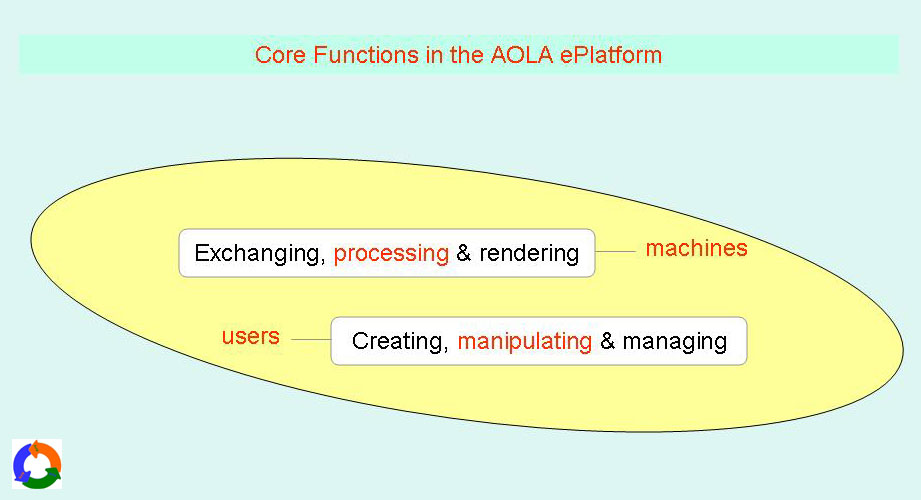|
||||||||
|
No doubt there are ongoing efforts of many to bring technology into Mathematics Education. In here, we begin a survey of these efforts and tools that further the experiences of learners and teachers. We will use some existing developments/projects to begin our discussion (e.g., an AOLA blog will be facilitate collaborative sharing). The opinions expressed next are solely the author from the perspective of AOLA. The interpretation of the importance and relevancy of the sites rest squarely on the readers.
Operating Environment for AOLA Framework The environment conducive to share experiences
in mathematics learning and teaching is what we have called an ePlatform
where participants interact any to any as defined by the need at
the time. As it was proposed in ATCM 2003, Figure 1 shows an ePlatform
with 'mathematical services' enabled. Briefly, based on Web
Services, mathematical services are distributed applications
that can be discovered via a third-party directory services (using
for example UDDI).
Once discovered and found appropriate, the client (the party that
is requesting the service - in this case, most likely be an Dynamic
Mathematics Object in an Activity in the AOLA ePlatform) will 'connect'
(bind) to the particular service and expected result will be obtained
as specified. This use of new Web technology for mathematics was
studied in a research project (2001-2003) in the Johannes Kepler
University. The project, funded by Austrian Science Foundation,
was titled 'A Framework for Brokering Distributed Mathematical Services.'
Mathematical services were also discussed in ATCM
2003. Technology for the AOLA Community ePlatform Six key technology components are identified to enable AOLA in
the ePlatform. They are Exchanging, Processing (computational),
Rendering, Creating, Manipulating, and Managing (See Figure 2).
Figure 2. Core Functions of the AOLA ePlatform. We will discuss each of the core functions next.
|
||||||||
| Contact
us in Hong Kong at +852 9532 5959 or 'any2any' at Skype |
||||||||
| Contact
Us | Privacy
Policy | About Us | Usage
Agreement 2004-2008© Any2Any Technologies, Ltd. All Rights Reserved. |
|
Last
Update :
Wednesday, August 27, 2008 at 07:51:45 AM
(HongKong Time) Staff Only | Bibliography | Publications | Research |
||||||


